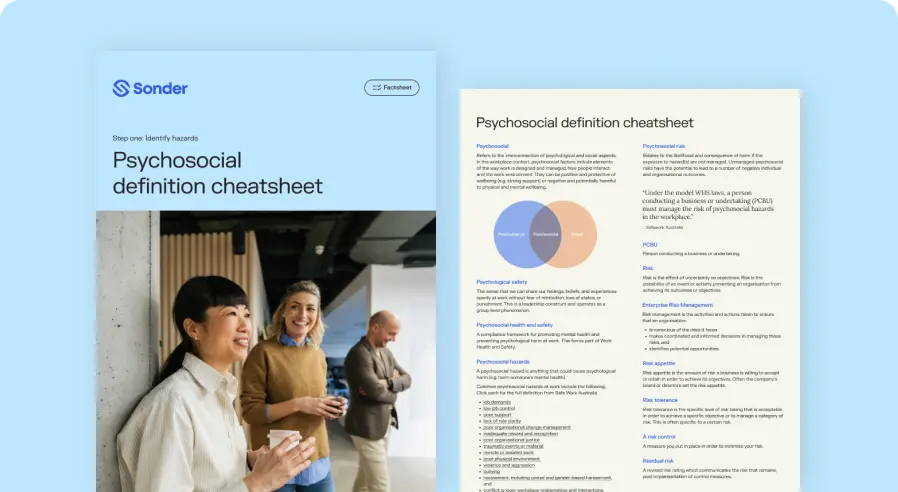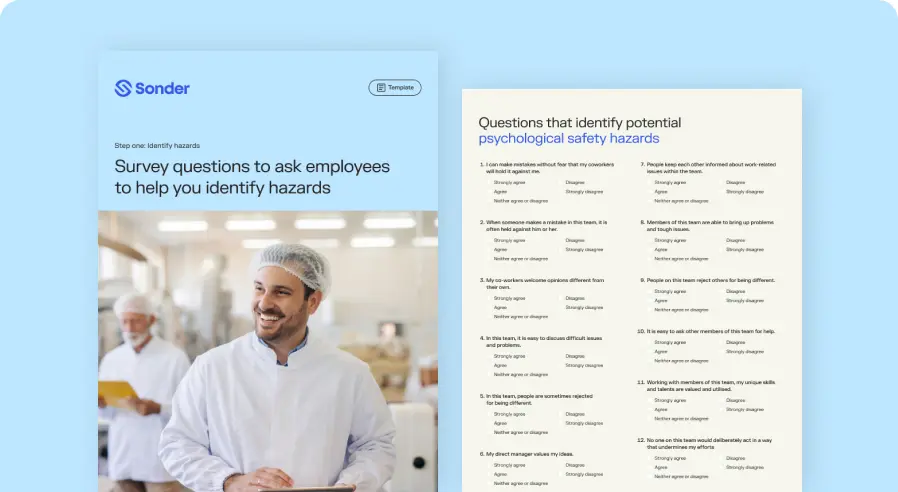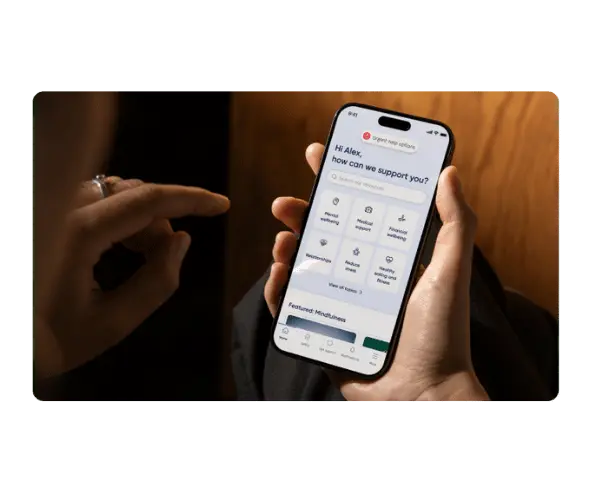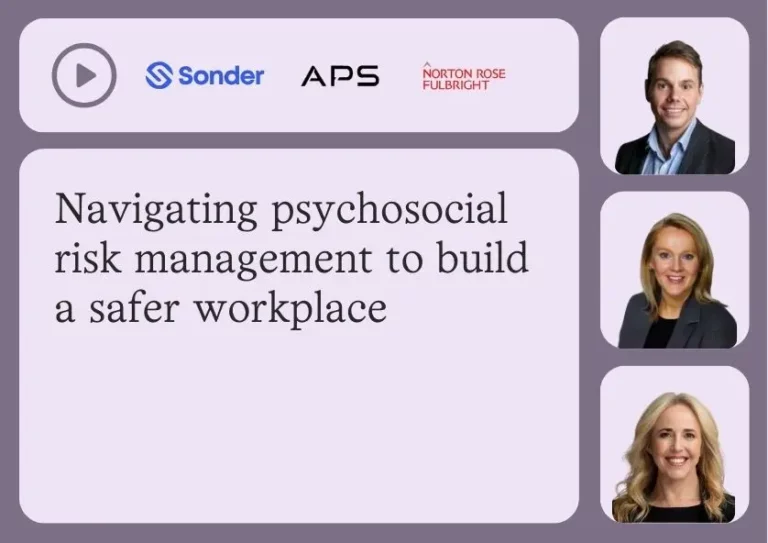
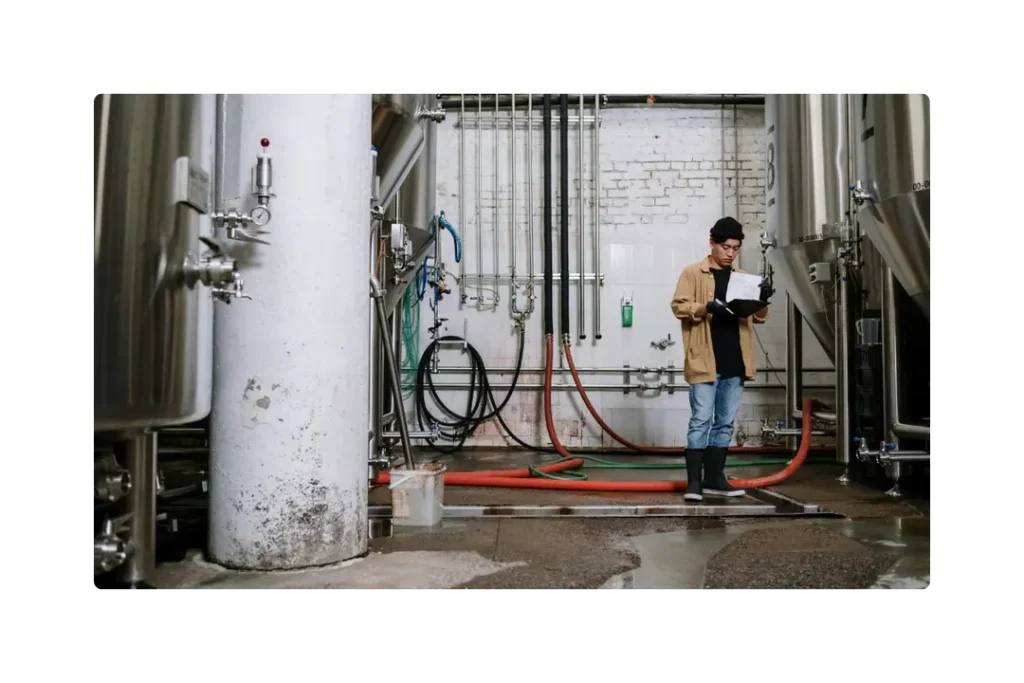
Download our hazard identification templates
How to identify hazards
Psychosocial hazards and risks can be identified through surveys and focus groups, inspecting your workplace, taking notes of how employees interact, your culture, and any common themes in engagement surveys.
It’s also a good idea to review existing WHS reports and records, and leverage data, insights, and trends from external providers, such as Sonder.


An important reminder
Not all teams will experience the same hazards, or experience them in the same way. For example, there may be hazards that are unique to front line workers compared to those in internal-facing roles.
Even the same hazards, like high workload, can be experienced differently across different teams.
“Workplace wellbeing is becoming a lot more holistic and preventative now, and we’ve seen some positive shifts and challenges around legislative changes, more discussion about psychosocial hazards. We’re becoming more aware of the impact of workplace stressors, workload pressure, all those sorts of things.”

Chief People Officer, HUB24
